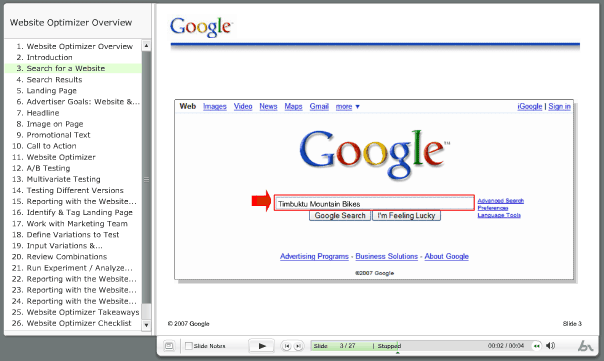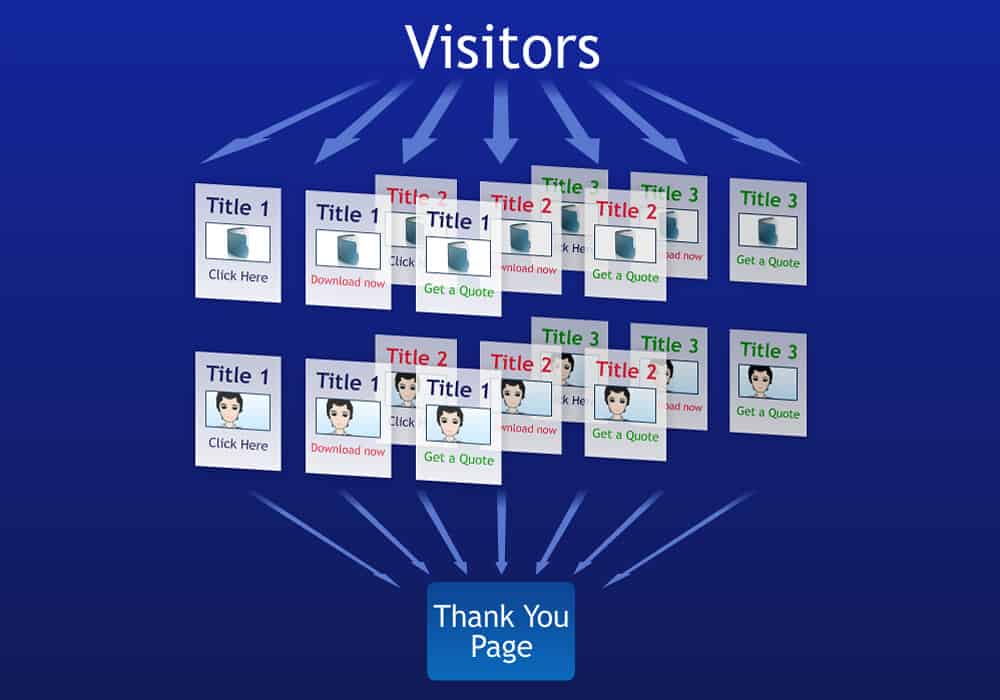About Google Optimize
Google Optimize is a web-based tool that allows businesses and marketing professionals to tailor a website to each user’s unique needs through testing webpage variants and analyzing the data from collected results. After all, tests are conducted and data is gathered about user experience, Optimize allows test issuers to select a leading webpage variant for their website.

Testing Benefits
Why use Google Optimize to determine the elements and the variants of your website’s pages? Especially in a growing market with eager freelancers who’d optimize your website for a pretty penny and the bulk of data available from Google Analytics, why add on another tool to your arsenal?
We give the top 3 benefits that come with using Google Optimize for your website below:
- Practical Application of Google Analytics Data
At the end of the day, the collected data is just simply data. Even if the data points out important information relevant to the performance of your website, whether it’s diminishing conversions or traffic, not putting the data to use is as useless as not bothering to collect data in the first place. While Google Analytics assists users in assessing the performance of their website, Google Optimize essentially helps its test users in using the data to improve their website’s performance through simulation.
- Speed up the Optimization Process
A large part of the website development process is adjusting a website’s interface and design, especially to cater to user experience and to retain user-friendly qualities. For some, this may mean adding completely new features to their website, and for others, this may just mean as much as clicking a few buttons. However, regardless of the scope of the change, you may have a negative return-investment if you wait around Google Analytics just to see the results produced by the changes done on your website, particularly if it turns out that the changes you made to your website’s interface didn’t really have much of an effect, or even worse, had a negative effect on your website’s performance. Google Optimize removes those possible liabilities by simply running optimization tests for you to ensure that any changes made to a website’s interface are positive ones.
- Free
Google Optimize is free to use as long as you have a Google account, Google Analytics installed on your website, and are using the Chrome browser. While there is an upgraded version available, Google Optimize 360, the standard Google Optimize has all the necessary tools that any practical business owner needs to improve his website.
Who Should Leverage Its Tools
While Google Optimize’s main purpose is to help its users run efficient optimization tests of their website’s interface, its applications are endless. From marketers to social media managers, as long as the user is focused on improving the website’s performance and has some degree of website development knowledge, Google Optimize can help website developers reach certain goals such as raising a conversion rate—the chances of a specific action being done by website visitors—or improve return-investment. Regardless of whether your business is big or small, due to the free cost of Google Optimize, even smaller, tech-savvy business owners and freelancers have the means to effectively test their website’s design without losing time and risking their website’s performance.
How to Set Up Google Optimize

Setting up Google Optimize is relatively simple—all you need is a Google account, Google Analytics properly installed on your website, and the Chrome browser. Though it is optional and not required to look up reports, there is also a Google Optimize extension for the Chrome browser, primarily to support the visual website editor for tests.
When you create your new Google Optimize account, you will be asked to name the account as well as the container—the container is what holds all the configuration information that Google Optimize needs for your website and tests. Once you’ve picked relevant names for your account and container, the only step left is to link your Google Analytics account, which can be done via the container on the Accounts page.
One thing to note for those using the free version of Google Optimize is that the free version does not include the incorporation of your Google Analytics audience data. Users who wish to have testing that factors in their website’s unique audience will have to switch to Google Optimize 360.
Experiment Types
What makes Google Optimize appealing is that even on the free version of this website development tool, users have access to a variety of different testing methods. While we won’t go over through every single testing method in this guide, we will explain and walk you through these two testing methods: A/B testing and multivariate testing.
A/B Testing – Split Software Testing
A/B software testing, or split software testing involves two factors: the original website page (known as A or the control page, similar to a control group in a scientific experiment) and the adjusted page (known as B). Adjustments to a page can be major, such as re-doing the entire page, or they can even be as minor as changing the color to a button or switching out the text to a call-to-action. More than one adjustment to a section can be included in testing the B webpage; a section is essentially a single element, such as a button or an image.
Multivariate Testing
While A/B testing primarily focuses on pitting a control webpage versus its changed version, multivariate testing allows you to try different section combos. With multivariate testing, more than two elements on a webpage can be tested at a time versus the A/B testing’s more singular model. This type of testing not only helps website developers key into the element variants that work best, but it also shows how each webpage element interacts with the other.
Setting Up an Experiment
Now that you’re more familiar with the two most common experiments used for Google Optimize’s tests, it’s time to try out an experiment. Keep in mind that in order to fully maximize the results of your experiments, it’s suggested to wait roughly two weeks in order to take into account your website traffic’s cyclical variations, or if you know there is a 95% chance that your adjusted element will result in a higher conversion rate. In the sections below, we go over how to set up an experiment for A/B testing as well as multivariate testing.
A/B Testing

- Access your Google Optimize account. To get to the Experiments page, click on your Container name, and then click Create Experiment.
- Name your experiment and provide the URL link of the webpage you would like to use for the experiment. Click A/B test and then click Create.
- Once you’ve created your experiment, it’s time to choose your variants or the different elements you will be changing for the B webpage. If it’s your first time using Google Optimize, it’s often suggested to test smaller elements such as a button color or a call-to-action rather than do large scale changes to the flow of your website. To start off the process, click Create Variant and then click Add. A visual overlay of your website will pop up; through this visual editor, you can change the element you want to use for the experiment.
4. After you’ve wrapped up your edits, the last step is to finalize your experiment’s objective and its targeting details. You can decide on your experiment’s objectives in the Objectives tab. With the objective left, all that is left to do is to choose when your adjusted B webpage, or experimental webpage, will appear and how many website visitors will have access to this web page. You can even decide to specify which website visitors will see the experimental webpage, depending on region and actions taken on your website. The original A webpage, or the control webpage, will also be accessible by website users to allow for the comparison and contrast of results.
Multivariate Testing

- Similar to A/B testing, click Create Experiment on your Google Optimize account. Enter a name for your experiment, the URL link of the webpage you wish to experiment on and choose the Multivariate Test. You can also link views with a Google Analytics account in this section.
- With the creation of your experiment, it’s time to decide on the variants you want to test in the sections allowed by multivariate testing. Click New Variant to add to a section, and give it an appropriate name. Once you’ve named your new variant, click Add and repeat for as many variants as needed. For easy editing, you can access the visual editor for your webpage by hovering over a variant.
- If necessary, you can also create new sections with the New Section button. Name the section after the variant you would like to test on, and then click Add. Repeat as many times as needed.
- Configure your experiment. Like A/B testing, you can choose which website users to target based on specific criteria and when you would like the experiment to run.
Frequently Asked Questions (FAQ) – Google Optimize
What is Google Optimize?
Google Optimise is a web-based application that helps businesses and marketing professionals improve the user experience and search engine rankings by testing multiple versions of a webpage and analysing the results.
What are the benefits of using Google Optimize?
There are many benefits of using Google Optimise, such as:
Practical application of Google Analytics data: It aids in making better use of the information gathered by Google Analytics.
Speeding up the optimization process: In order to guarantee that modifications to your website’s interface have a good effect, you can put them through optimisation testing.
Free to use: If you have a Google account, Google Analytics, and the Chrome web browser, you can utilise the basic version of Google Optimise at no cost.
Who should use Google Optimize?
Marketers, social media managers, and web designers can all benefit from using Google Optimise. No matter how big or small your company is, Google Optimise can help you enhance your website’s performance and user experience.
How do I set up Google Optimize?
Google Optimise has a simple setup process. You’ll require the Chrome web browser, a Google account, and the Google Analytics add-on for your website. Here are the fundamentals:
Start by giving your Google Optimise account and container a name.
Establish a connection between Google Analytics and Google Optimise.
Can I execute any kind of experiment in Google Optimise?
Google Optimise lets you run several different kinds of experiments. Multivariate and split-group experiments are two examples.
What is A/B Testing?
In A/B testing, also known as split testing, two versions of a webpage (A and B) are compared to one another. You may put the buttons, text, and layout through their paces as you try out different variations.
How do I set up an A/B test in Google Optimize?
Get into your Google Optimise profile.
Make an experiment by selecting the name of your container.
Simply give your test a name and enter the URL of the page you wish to compare.
Modify the page’s components to generate new iterations.
Clarify the aims and parameters of the experiment.
What is Multivariate Testing?
With multivariate testing, you may compare multiple iterations of a webpage at once to see which one performs best.
How do I set up a Multivariate test in Google Optimize?
Start a new Google Optimise experiment and give it a name.
Simply type in the address of the test site and click on Multivariate Test.
Specify the subsection-level variations you wish to test.
Choose the parameters of your experiment and schedule its execution.















